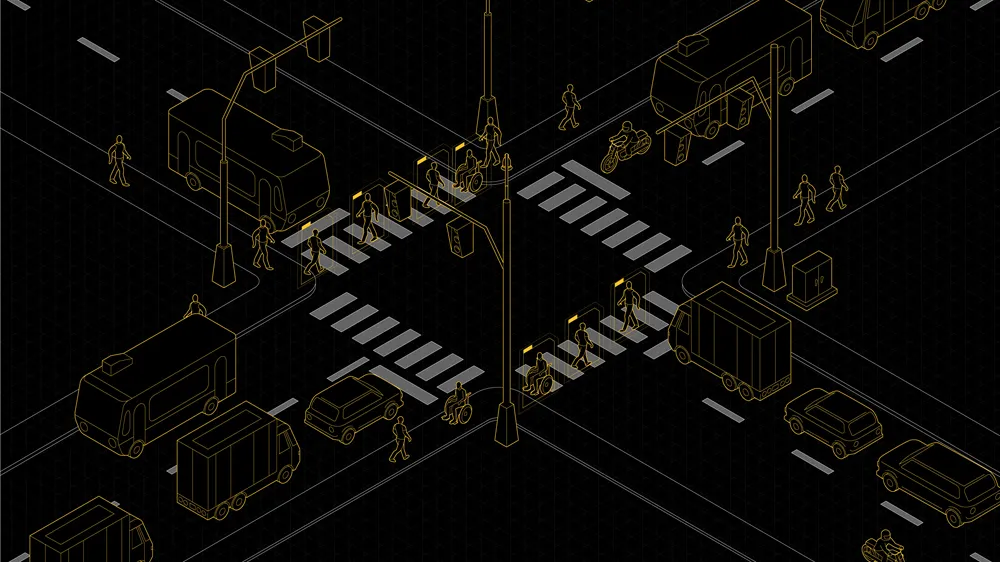
Artificial intelligence specialist Derq says it has successfully demonstrated technology designed to prevent collisions between drivers, pedestrians and cyclists.
Deployed at the edge, Derq’s real-time perception and connectivity AI platform takes in and aggregates data from various sources, including traffic cameras, signal controllers, connected vehicles, smartphone apps and other cloud-based services.
The company says this means it is capable of accurately detecting, tracking, and predicting the intent of pedestrians, cyclists and vehicles as they approach crossings in real time through AI-powered computer vision algorithms.
In collaboration with Control Technologies, Danlaw and CeVe, the solution includes connected vehicle messages, flashing pedestrian signs, actuating traffic signals and smartphone alerts.
Danlaw has more than 8,000 Vehicle to Everything (V2X) devices throughout North America and provided its RouteLink C-V2X roadside unit and AutoLink C-V2X on-board unit for a demonstration for Florida Department of Transportation and Traffic Engineering Research Lab in Tallahassee, Florida.
CeVe provided iOS and Android smartphone apps connecting drivers, pedestrians, and cyclists to transportation infrastructure.
The apps help pedestrians and cyclists request a touchless activation of crosswalk signals and notify them of nearby vehicles as they approach intersections.
Derq says reported safety insights from the solution will help transport agencies better understand and improve road safety performance.
“Driver, pedestrian and cyclist safety are paramount to everything we do," said Karl Jeanbart, COO of Derq.










